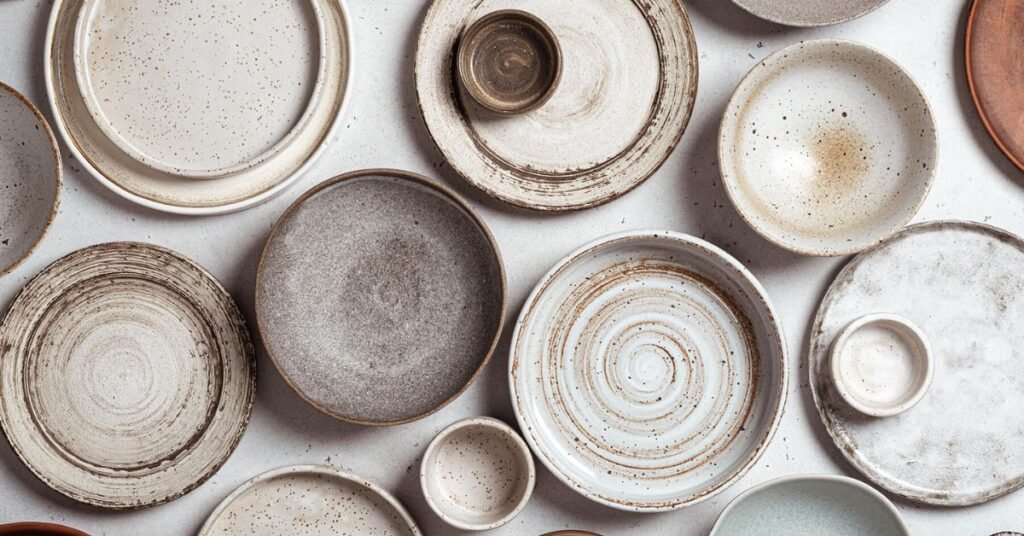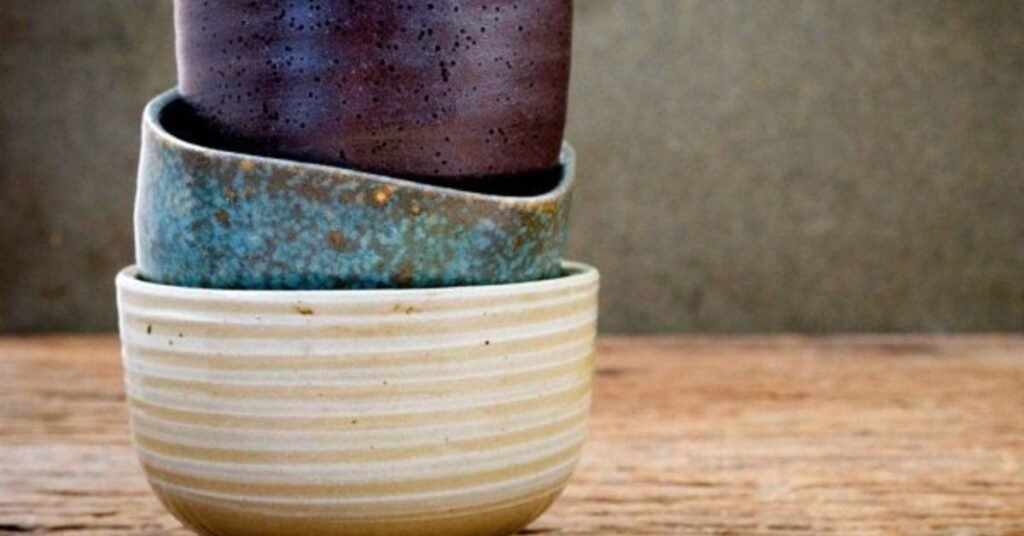Microwaves have become essential in modern kitchens, providing speedy and helpful ways of warming up or preparing food. With the range of materials available for cookware, it’s vital to comprehend whether ceramic is microwave-safe?
Glass and ceramic dishware are typically safe for microwave use, but there are exceptions, like precious stones and some high-quality ceramics.
This article will investigate the complexities of involving art in microwaves.
Figuring out ceramic:
Clay is an expansive term incorporating different materials, including pottery, stoneware, and porcelain. These materials are produced using mud formed and afterwards terminated at high temperatures. The outcome is a challenging and frequently lovely item that can endure regular use.
Kinds of Ceramic:
1. Ceramic:
That is one of the most seasoned types of ceramic, frequently unglazed or coated with a porous surface. It is commonly not prescribed for microwave use because its permeable nature can retain water and cause the material to break under high intensity.
2. Stoneware:

A more tough type of clay that is non-permeable and frequently used for cooking and baking. It can commonly be used in the Microwave. However, it is fundamental to check for a particular producer’s directions.
3. Porcelain:
Known for its fine, white, and polished finish, porcelain is a kind of ceramic that is likewise non-permeable and microwave-safe, given it doesn’t have a metallic design.
Also Read: Is Pyrex Microwave Safe?-A Complete Guide
Why Ceramic is Popular for Microwave Use:
Ceramic dishes are leaned toward in light of multiple factors:
1. Heat Obstruction:
Clay can deal with high temperatures, making it ideal for microwave cooking.
2. Non-Receptive:
Not at all like a few metals, clay doesn’t respond to acidic or basic food sources, guaranteeing that the food’s taste stays unaltered.
3. Tasteful Allure:
Ceramic dishes come in different plans and varieties, adding style to any dinner.
4. Sturdiness:
Excellent clay can last quite a long time if appropriately focused, making settling on it a financially savvy decision.
Is All ceramic Microwave Safe?
While fire is safe for microwave use, there are exemptions. It’s significant to check if the ceramic dish is marked as microwave-safe. Here are a few vital elements to consider:
1. Glazing:

The coating on ceramic dishes can, in some cases, contain materials that are not microwave-safe. For instance, metallic coatings can cause arcing (igniting) and ought never be used in a microwave. Continuously guarantee that the coating is liberated from metallic components and check for a microwave-safe name.
2. Breaks and Chips:
Clay dishes with breaks or chips can become risky in the Microwave. These flaws can prompt lopsided warming, making the clay break further or try to break. Continuously examine your clay dishes for any harm before using them in the Microwave.
3. Thickness and Organization:
A few clay dishes are thicker than others, influencing their heat in the Microwave. Thicker ceramics might warm unevenly, possibly prompting breaking. It’s essential to consider the creation; a few potteries might have added non-microwave-safe substances.
Also Read: What Does U E Mean On A Washing Machine?-A Complete Overview
Tips for Using Ceramic in the Microwave:
To guarantee the well-being and life span of your ceramic dishes, follow these tips:
1. look at Marks:
Continuously check for a microwave-safe mark before using ceramic dishes in the Microwave. If all else fails, contact the producer for an explanation.
2. Avoid Sudden Temperature Changes:
Ceramic can break because of warm shock. Avoid straightforwardly putting a chilly ceramic dish into a hot microwave or vice versa. Allow the dish to come to room temperature before microwaving.
3. Use Microwave-Safe Covers:
If you want to cover your food, use a microwave-safe cover rather than saran wrap or aluminium foil, which are unsuitable for microwave use.
4. Screen Warming Times:
Avoid running the Microwave for extended periods with ceramic dishes, mainly if you are unsure of their well-being. Begin with more limited warming times and slowly increment depending on the situation.
5. Examine Routinely:
Consistently examine your ceramic dishes for indications of mileage, like breaks or chips, and supplant them if necessary.
Common Misconceptions:
Here are a few everyday confusions about ceramic being microwave-safe:
1. All ceramic is Microwave Safe:

While many ceramic dishes are microwave-safe, not all are. A few ceramic dishes might contain metallic components or coatings that can cause arcing or discharge harmful substances when warmed in the Microwave. Continuously check the name or maker’s directions to guarantee an ceramic dish is safe for microwave use.
2. Ceramic is Dependably Intensity Safe:
While ceramic dishes are generally safe, they can break or break whenever exposed to fast temperature changes or if they have existing blemishes like breaks or chips. It’s essential to deal with ceramic dishes with care and avoid unexpected temperature changes, for example, moving them straightforwardly from the cooler to the Microwave.
3. All Ceramic Dishes Intensity Equitably:
While clay dishes can give moderately in any event, warming, thicker or sporadically formed ceramics might warm less equally than others. Blending or turning food halfway through the warming system can assist with advancing more uniform warming.
4. Any Ceramic Coating is Microwave Safe:
A few ceramic coatings might contain lead or other harmful substances that can filter into food when warmed in the Microwave. Using clay dishes that are explicitly named microwave safe and conform to somewhere safe and secure norms is vital to avoid potential well-being gambles.
5. Ceramic Dishes with Metallic Accents are Microwave Safe:
Ceramic dishes with metallic accents or designs might cause arcing in the Microwave, prompting likely harm to the dish and the actual Microwave. Avoid involving ceramic dishes with metallic components in the Microwave to forestall mishaps and harm.
Also Read: Why Is My Microwave Display Dim?-A Comprehensive Guide
FAQ’s:
1. Is 100 percent ceramic microwave safe?
Ceramic cookware is flexible. It can be used for cooking in the oven, on the stove, in the Microwave, or in the air fryer.
2. Is coated ceramic microwave safe?
A few clay pieces are microwave-safe, and some are not.
3. Is the art inside the Microwave great?
A ceramic cavity has a non-tacky surface. It’s not difficult to clean and maintain, yet the warming system is nearly more extended than that of a treated steel hole.
4. Could I, at any point, heat in an ceramic dish?
Ceramic dishes can likewise be used in your indoor kitchen broiler. The main component to remember while placing a clay dish into a high-temperature broiler is the temperature of the ceramic dish. If the dish is excessively cool, it will break.
Conclusion:
Clay dishes are a popular and generally safe choice for microwave use, provided specific precautions are taken. Grasping the clay, checking for microwave-safe names, and staying away from unexpected temperature changes are vital to securely firing your Microwave.
By observing these rules, you can partake in the accommodation of microwave cooking while at the same time keeping up with the magnificence and usefulness of your clay dishes. Continuously decide in favour of alert and focus on security to guarantee a problem-free and charming cooking experience.

